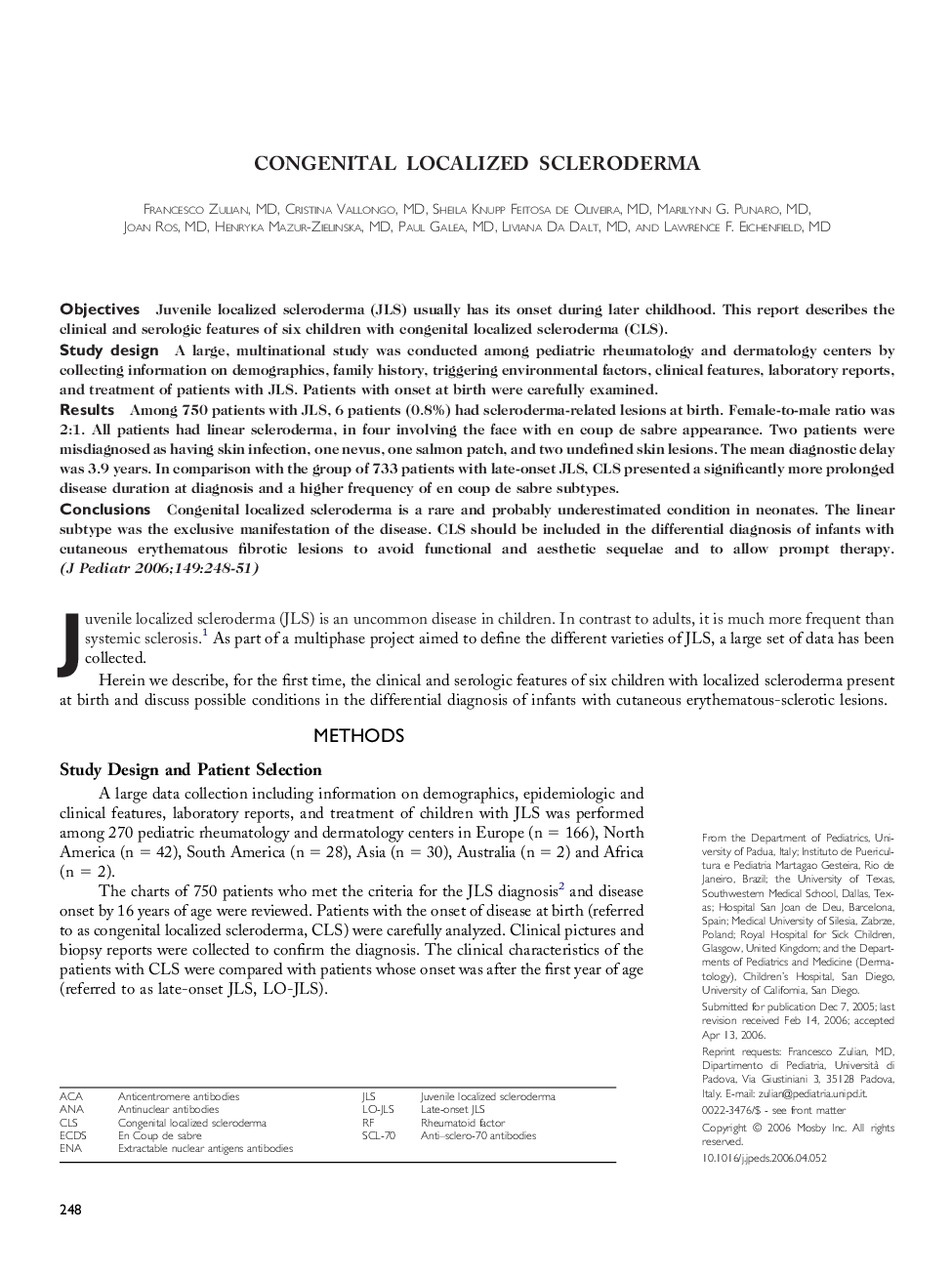| Article ID | Journal | Published Year | Pages | File Type |
|---|---|---|---|---|
| 4168862 | The Journal of Pediatrics | 2006 | 4 Pages |
ObjectivesJuvenile localized scleroderma (JLS) usually has its onset during later childhood. This report describes the clinical and serologic features of six children with congenital localized scleroderma (CLS).Study designA large, multinational study was conducted among pediatric rheumatology and dermatology centers by collecting information on demographics, family history, triggering environmental factors, clinical features, laboratory reports, and treatment of patients with JLS. Patients with onset at birth were carefully examined.ResultsAmong 750 patients with JLS, 6 patients (0.8%) had scleroderma-related lesions at birth. Female-to-male ratio was 2:1. All patients had linear scleroderma, in four involving the face with en coup de sabre appearance. Two patients were misdiagnosed as having skin infection, one nevus, one salmon patch, and two undefined skin lesions. The mean diagnostic delay was 3.9 years. In comparison with the group of 733 patients with late-onset JLS, CLS presented a significantly more prolonged disease duration at diagnosis and a higher frequency of en coup de sabre subtypes.ConclusionsCongenital localized scleroderma is a rare and probably underestimated condition in neonates. The linear subtype was the exclusive manifestation of the disease. CLS should be included in the differential diagnosis of infants with cutaneous erythematous fibrotic lesions to avoid functional and aesthetic sequelae and to allow prompt therapy.
